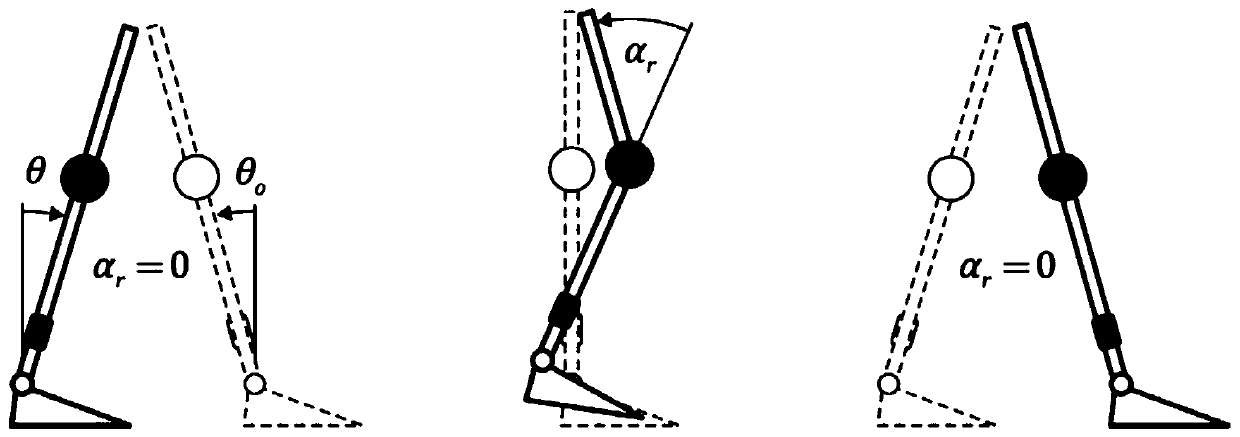System to assist walking
A technology for assisting walking and actuators, which is applied in the field of active orthoses and spinal cord injury patients, and can solve problems such as foot sensors that are not specifically mentioned.
- Summary
- Abstract
- Description
- Claims
- Application Information
AI Technical Summary
Problems solved by technology
Method used
Image
Examples
Embodiment Construction
[0039] figure 1 Shown is a device according to an embodiment of the invention. The device includes: a pair of KAFO orthoses, used to set the knee flexion angle (α r ) Is connected to the KAFO type orthosis; a sensor is used to measure the inclination angle (θ) of the leg, and optionally the vertical acceleration a z ; The control unit (7), the sensor array (6) and the actuator (5) are connected to the control unit (7), and the control unit (7) executes an algorithm according to the sensor readings to determine how to support the stage (knee joint is The angle of the knee joint is changed during the locking and swing phases (flexion-extension). The algorithm is in image 3 Details in the.
[0040] In addition, in figure 1 An embodiment is shown in which the main elements can be seen. The support for the foot (1) can be rigid or flexible (usually called "sag foot clamp") and hold the user's foot; the rigid substructure (2) is fixed to the patient's calf; The rigid upper structure...
PUM
 Login to View More
Login to View More Abstract
Description
Claims
Application Information
 Login to View More
Login to View More - R&D
- Intellectual Property
- Life Sciences
- Materials
- Tech Scout
- Unparalleled Data Quality
- Higher Quality Content
- 60% Fewer Hallucinations
Browse by: Latest US Patents, China's latest patents, Technical Efficacy Thesaurus, Application Domain, Technology Topic, Popular Technical Reports.
© 2025 PatSnap. All rights reserved.Legal|Privacy policy|Modern Slavery Act Transparency Statement|Sitemap|About US| Contact US: help@patsnap.com



